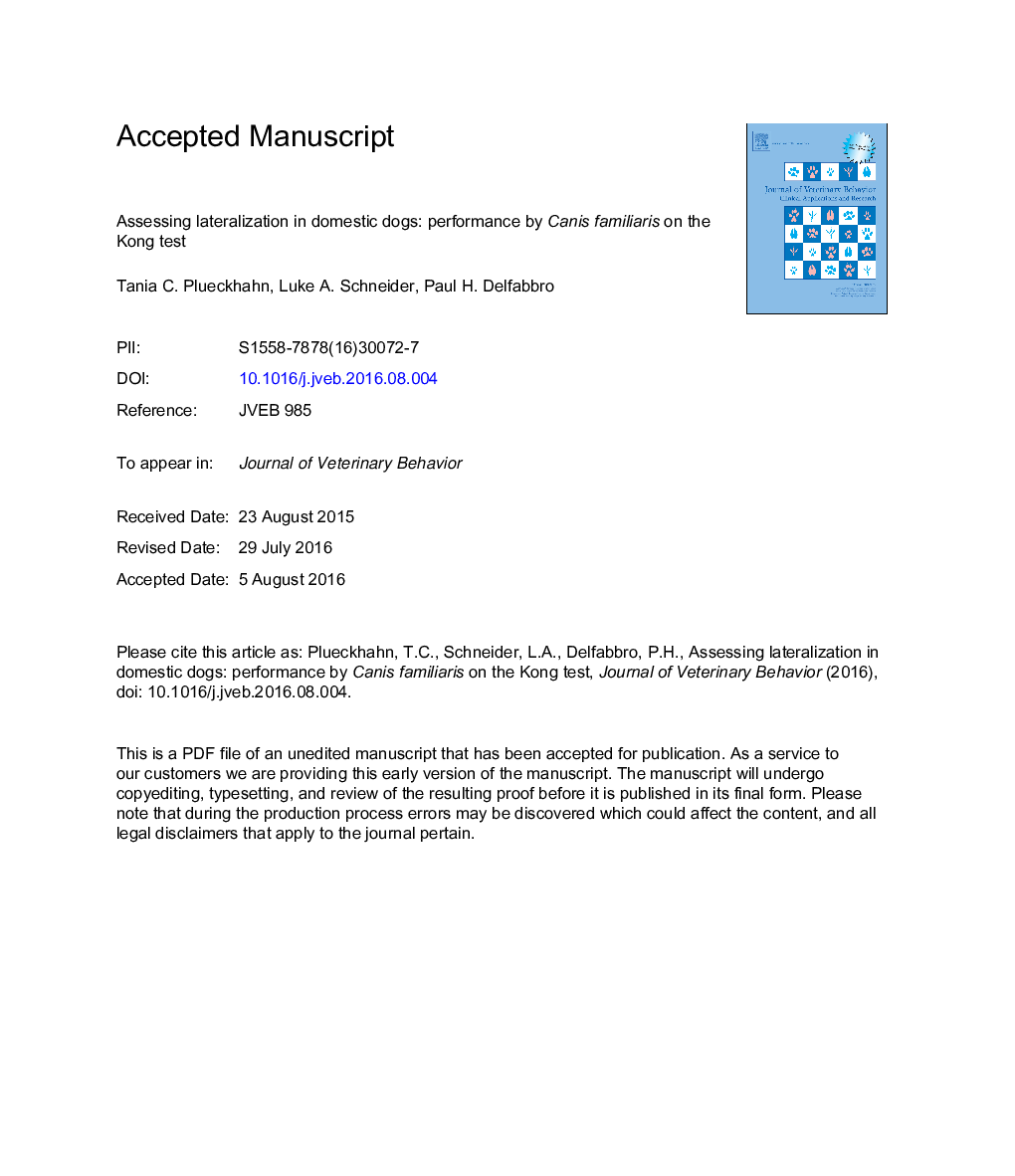| Article ID | Journal | Published Year | Pages | File Type |
|---|---|---|---|---|
| 5535899 | Journal of Veterinary Behavior: Clinical Applications and Research | 2016 | 25 Pages |
Abstract
A widely used method for testing lateralization in domestic dogs is the Kong test. This study examined the Kong test and the individual characteristics of dogs associated with performance on this task. Assessments of paw preference were conducted on 96 dogs, with additional demographic and temperament data collected from the owners. To standardize the Kong test for this study, each dog was presented with a Kong filled with the same frozen food, and the criterion for completion of the test was 50 touches, within a 1-hour time limit. The results showed that 60% of dogs completed the test, a further 15% engaged with the task but failed to reach the required 50 touches, and almost 25% did not engage with it at all. Dogs with higher owner-rated levels of “neuroticism” were less likely to complete the task. Completion of the task was more likely in taller dogs and those that slept apart from the owners. Performance was unrelated to the dog's age, sex, whether the dog was from a single or multiple dog household, and other temperament measures. The results suggest that the Kong test is most appropriate for larger breeds. Future research may further investigate factors that influence performance on the Kong test of motor laterality.
Related Topics
Life Sciences
Agricultural and Biological Sciences
Animal Science and Zoology
Authors
Tania C. Plueckhahn, Luke A. Schneider, Paul H. Delfabbro,
